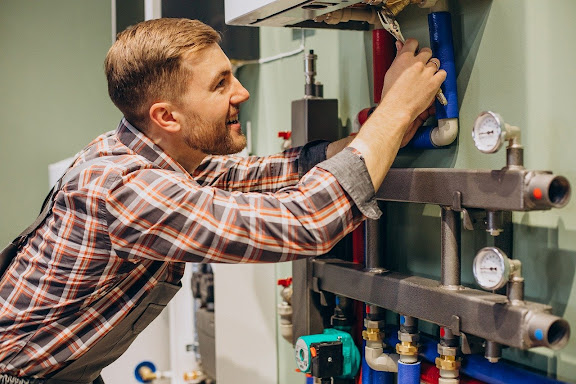What is Combi Boiler Installation?
- Get link
- X
- Other Apps
A combi boiler, short for "combination boiler," is a type of boiler used in residential homes to provide both central heating and hot water from one compact unit, without the need for a separate hot water storage tank. This dual functionality makes combi boilers a popular choice for small to medium-sized homes with limited space. Here's a detailed look at the process of combi boiler installation, including key considerations and steps involved.
Pre-installation Considerations:
Boiler Sizing and Selection: Before installation, it's crucial to choose the right size and model of the combi boiler to meet the heating and hot water demands of the household. A boiler that's too small won't adequately heat your home or provide enough hot water, while one that's too large will waste energy and increase your utility bills. Factors like the number of bathrooms, the size of the home, and insulation quality should influence the choice.
Location: Combi boilers are known for their compact size, which allows them to be installed in various locations such as kitchens, utility rooms, or airing cupboards. The chosen location should have access to an external wall for the flue and should be close to water mains and existing pipework to minimize installation complexity and cost.
Regulatory Compliance: It’s important to ensure that the installation complies with local building regulations and standards related to energy efficiency, safety, and emissions. In many regions, the installation must be carried out by a certified professional to ensure compliance and safety.
Installation Process:
Removal of Old Boiler: If replacing an existing boiler, the first step involves safely disconnecting and removing the old unit. This includes draining the existing central heating system and safely disposing of the old boiler according to local regulations.
Installation of the New Combi Boiler: The new combi boiler is then mounted on the wall, typically at the location of the previous boiler if it meets the requirements. The installation includes connecting the boiler to the water mains for hot water supply, linking it to the central heating system, and installing a flue to expel exhaust gases outside the building.
Pipework and Electrical Connections: Adjustments to pipework might be necessary to fit the new boiler, especially if the new model has different connection points. This could involve altering or extending existing pipes. Additionally, electrical wiring must be connected to power the boiler’s controls and safety systems.
Testing and Commissioning: Once the boiler is installed, it needs to be thoroughly tested to ensure it operates safely and efficiently. This includes checking for leaks, testing the pressure in the heating system, and adjusting the settings to optimize performance.
Final Checks and Customer Briefing: The installer should perform a final safety check and provide a briefing to the homeowner on how to operate the new boiler. This includes explaining the controls, how to maintain the boiler, and what to do in case of a malfunction.
Post-Installation:
After the installation, it's advisable to have a follow-up inspection and to set up an annual maintenance schedule to ensure the boiler continues to operate efficiently and safely. Regular maintenance can extend the life of the boiler, prevent breakdowns, and ensure maximum efficiency, reducing heating costs over time.
In summary, installing a combi boiler involves careful planning and consideration of the household’s specific needs, compliance with local regulations, and ensuring proper installation by qualified professionals. The compact and efficient nature of combi boilers makes them a suitable choice for many modern homes, providing a reliable source of heat and hot water.
- Get link
- X
- Other Apps




Comments
Post a Comment